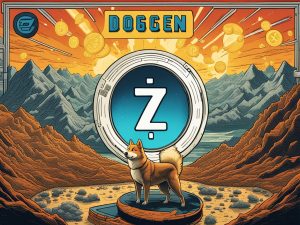Understanding the Growing Liquid Restaking Market in the Crypto Space 📈
In the dynamic world of cryptocurrencies, the liquid restaking market has been gaining significant traction, with various protocols competing to attract user deposits. Let’s delve into the details of this burgeoning sector and explore the key players and trends shaping the landscape.
The Rise of Liquid Restaking Protocols 💧
One of the prominent players in the liquid restaking space is Etherfi, a leading protocol that manages over 1.07 million ETH, equivalent to approximately $3.8 billion in user deposits. Positioned as a key player in the liquid restaking (LRT) market, Etherfi offers users access to restaking yields through its EigenLayer platform, highlighting its crucial role in the growing LRT ecosystem.
- Etherfi manages 1.07 million ETH, translating to $3.8 billion in user deposits
- Offering access to restaking yields via EigenLayer
- Key player in the expanding LRT market
Key Players in the Liquid Restaking Market 🚀
As the liquid restaking sector continues to witness remarkable growth, several protocols are contributing significantly to the market. In addition to Etherfi, other notable players include:
- Renzo: Manages $2.9 billion
- Puffer: Over $1.4 billion in user deposits
- Kelp: Manages more than $840 million
- Swell: Holds $345 million in value
- Eigen: Managing $340 million in user deposits
Benefits of Liquid Restaking 🌟
Restaking allows users to utilize their staked ETH or liquid staking tokens on platforms like EigenLayer for restaking purposes. By allocating these assets to support Ethereum-based applications termed “actively validated services,” users contribute to expanding Ethereum’s security framework while earning rewards.
- Utilize staked ETH or liquid staking tokens for restaking
- Support Ethereum-based applications
- Enhance Ethereum’s security framework
Enhancing Liquidity Through Liquid Restaking 🔄
Liquid restaking protocols like EigenLayer offer users the benefit of engaging with various services while maintaining the liquidity and accessibility of their ETH capital. By accepting ether deposits, restaking them, and issuing derivative tokens, these protocols provide additional incentives for users to participate in the ecosystem, including LRTs and EigenLayer’s rewards programs.
- Engage with services while maintaining liquidity
- Receive derivative tokens as incentives
- Participate in rewards programs
Expanding Access to Liquid Restaking 🌐
LRT protocols play a crucial role in allowing users who do not possess the required 32 ETH for native or direct restaking to access the platform. This accessibility has contributed to the significant growth of the liquid restaking market, with top protocols amassing assets totaling $9.7 billion, representing over two-thirds of EigenLayer’s $13 billion total value locked.
- Enable users without 32 ETH to partake in restaking
- Top protocols hold $9.7 billion in assets
- Major contribution to EigenLayer’s total value locked
The Impact of Airdrops in Liquid Restaking 🪂
The expansion of the liquid staking sector can also be attributed to anticipated airdrops from liquid staking projects and EigenLayer. These airdrops have incentivized users to participate in the ecosystem, driving growth and engagement within the market.
- Airdrops contribute to market growth
- Incentivize user participation
- Drive engagement within the ecosystem
Hot Take: Seizing Opportunities in the Liquid Restaking Sector 🔥
As the liquid restaking market continues to evolve and attract more users, it presents a myriad of opportunities for crypto enthusiasts looking to maximize their holdings and engage with innovative protocols. By exploring the diverse options available in the liquid restaking space, you can leverage these platforms to enhance your crypto portfolio and actively contribute to the growth of the ecosystem.





 By
By
 By
By
 By
By

 By
By
 By
By